|
|
ADDRESS AT THE COMMEMORATIVE DINNER IN MEMORY OF THE LATE SHRI K.R. NARAYANAN ON THE OCCASION OF 3RD LSE ASIA FORUM 2006, NEW DELHI
07-12-2006 : New Delhi
Bringing smiles to billion people
"Rural prosperity through integrated actions"
I am delighted to address the third London School of Economics Asia Forum 2006 organized in memory of late Shri. K R Narayanan.
Rashtrapati Bhavan has had a dynamic history. Post-independence, Rashtrapati Bhavan was ennobled by the stature and standing of its occupants. My illustrious predecessors, ten Presidents were all men of rare distinction, personalities of nobility, intellectual and academic giants, men of political sacrifice and above all statesmen of the highest caliber. When I go through the annals of Rashtrapati Bhavan?s history post-independence, I feel humbled. My salutations to all of my esteemed and illustrious predecessors.
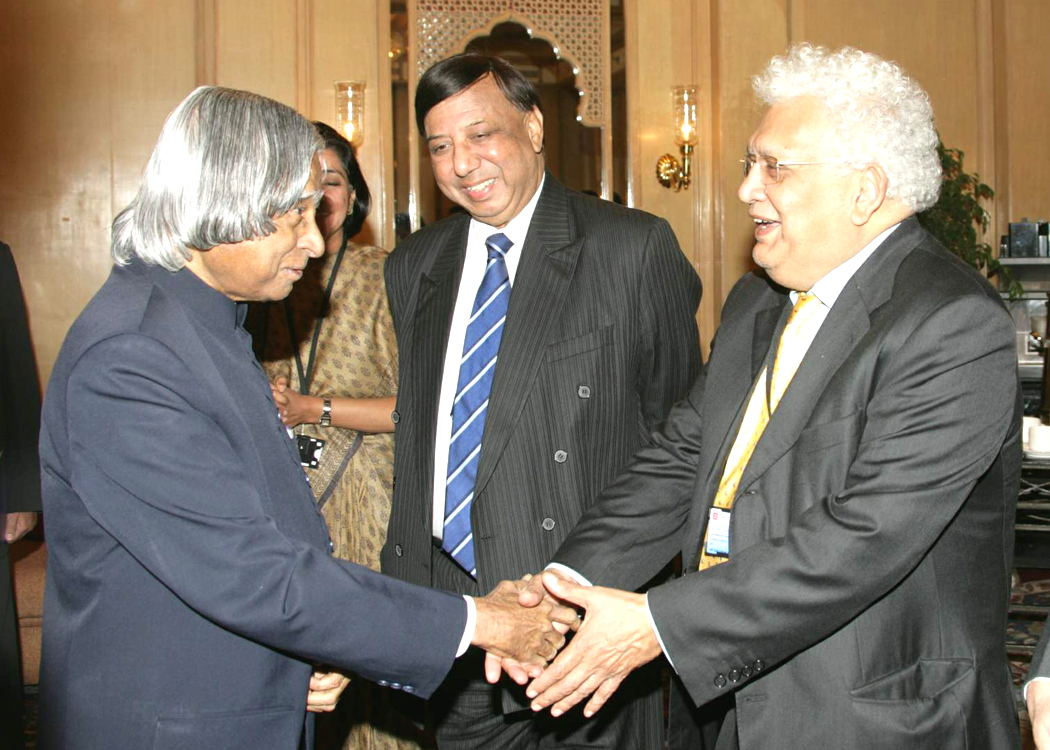
When I took over the Presidentship from Mr. K.R. Narayanan, the 10th President, I had a unique link with him for the reason he was very much interested in the Developed India Vision 2020. He had a passion for the upliftment of the underprivileged in the society and was for directing science and technology for the betterment of human lives. While evolving the Vision 2020, I used to meet him frequently and brief him the progress. He used to say that the value addition is important for agriculture produce, so that the agriculture field will be competitive with the other two sectors such as manufacturing and services. This was the very important economic input which I got from Shri K. R Narayanan. As a tribute to this great leader with an economic acumen with a human touch and in view of the strong relationship between the London School of Economics and India, I would like to discuss about one of the key growth drivers of Indian economy when India is in the process of transforming itself into a developed nation before 2020.
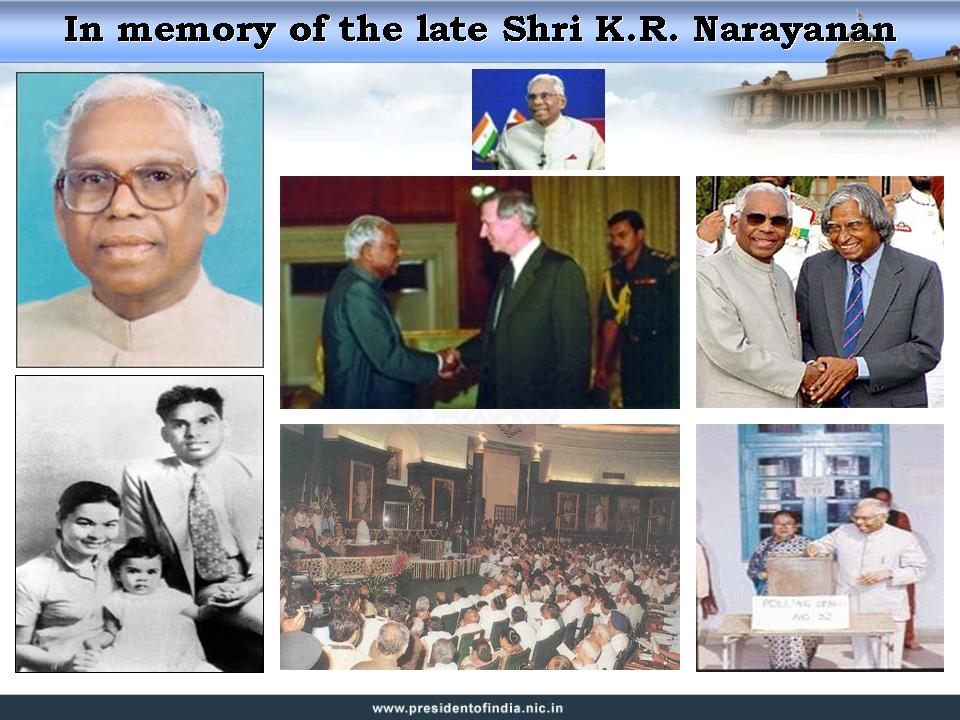

Ambience in the Nation
In the Indian history, very rarely our nation has come across a situation, all at a time, an ascending economic trajectory, continuously rising foreign exchange reserve, reduced rate of inflation, global recognition of the technological competence, energy of 540 million youth, umbilical connectivities of 20 million people of Indian origin in various parts of the planet, and the interest shown by many developed countries to invest in our engineers and scientists including setting up of new R&D centers. The distinction between the public and the private sectors and the illusory primacy of one over the other is vanishing. India as the largest democracy in the world has a reputation for its democracy and for providing leadership for the one billion people with multi-cultural, multi-language and multi-religious backgrounds. And also our technological competence and value systems with civilizational heritage are highly respected. Foreign Institutional Investors are finding investing in India attractive. Indians are also investing in abroad and opening new business ventures. Indian economy is growing with an average annual growth rate of 8% GDP.
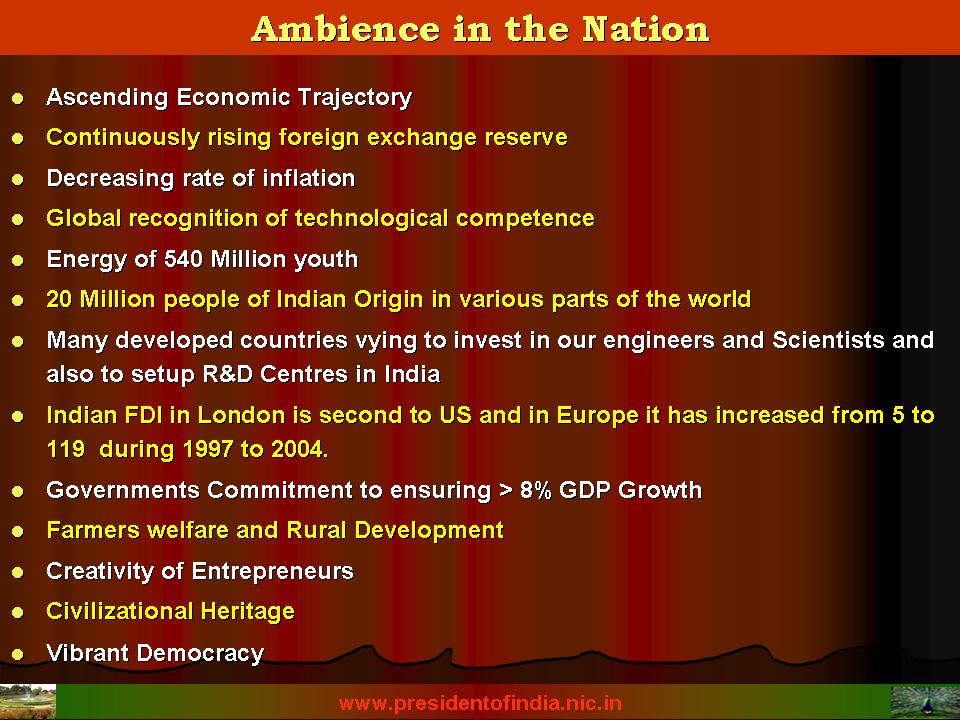

Economic development: Transforming India into a developed nation
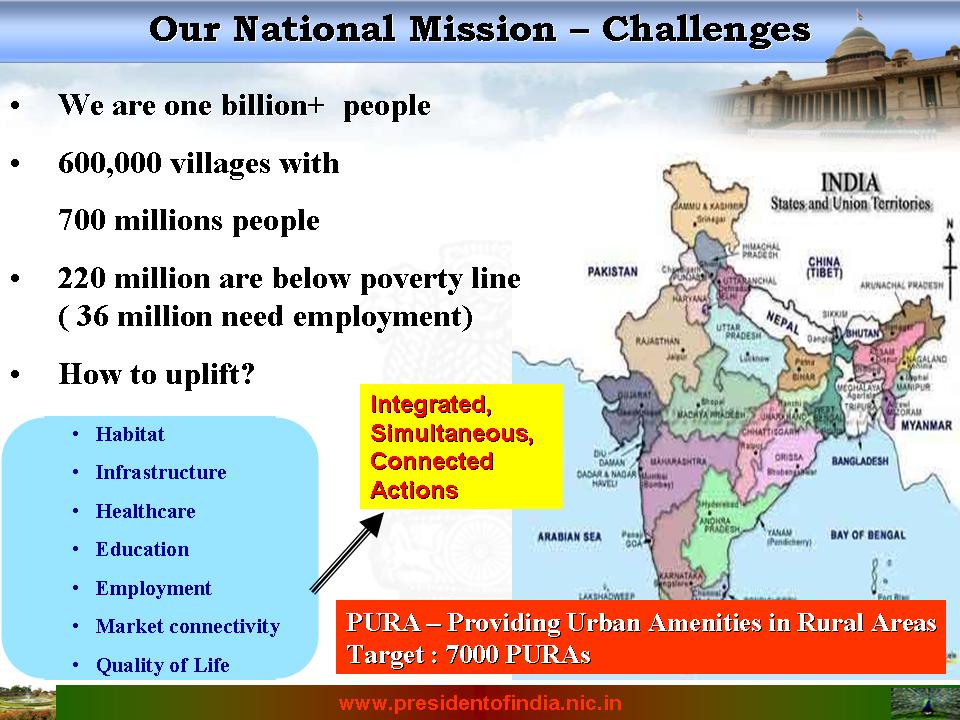
However, there is a need to lift up the economic conditions and lifestyle of over 220 million people out of the one billion plus population. One of the reasons for this situation is that large part of the growth comes from manufacturing and services sector. The agriculture has been growing just at 1.6%. If we have to uplift the 220 million people living below poverty and provide improved quality of life, we have to ensure that the agriculture sector grows at least at 4% per annum. For providing this growth, we have to spread the development process to the rural sector. That is what the PURA (Providing Urban Amenities in Rural Areas) programme involving 4 connectivities namely Physical, Electronic and Knowledge leading to Economic connectivity envisages. Hence, the entire country should have 7000 PURAs encompassing over 600,000 villages. The theme of PURA, apart from concentrating on reinforcing agriculture, will emphasize on agro processing, development of Rural Craftsmanship, dairy, fishing, silk production, so that the non-farm revenue for the rural sector is enhanced, based on the core competence of the region. Also the rural economy will be driven by renewable energy such as solar, wind, bio-fuel and conversion of municipal waste into power. In this approach, the aim is to make sustainable development using the core competence of the rural sector.
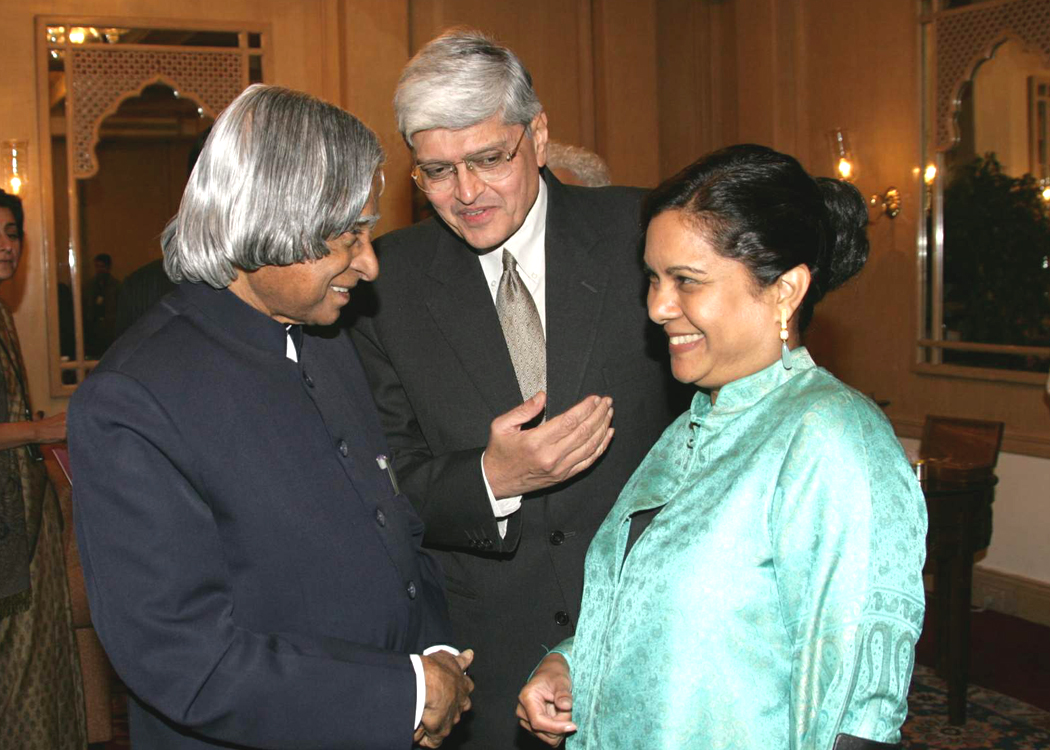
In India, the development of a rural sector is very important. Government, private and public sectors have been taking up rural development in parts. For example, starting an education institutions, starting a healthcare centers, laying roads, building houses, building a marketing complex, giving a communication link in a particular rural area have been taken up in the past as individual activities. During the last few decades, it is our experience, that these initiatives starts well, just like heavy rain resulting into multiple streams of water flow. As soon as the rain stops, few days later all the streams get dried up because there is no water bodies to collect the surplus water and store it at the right place. For the first time, PURA envisages an integrated development plan with employment generation as the focus, driven by provision of the habitat, healthcare, education, skill development, physical and electronic connectivity and marketing.
Hence, I would like to concentrate for today's discussion on how to implement PURA in Indian setting for the consideration of this audience.
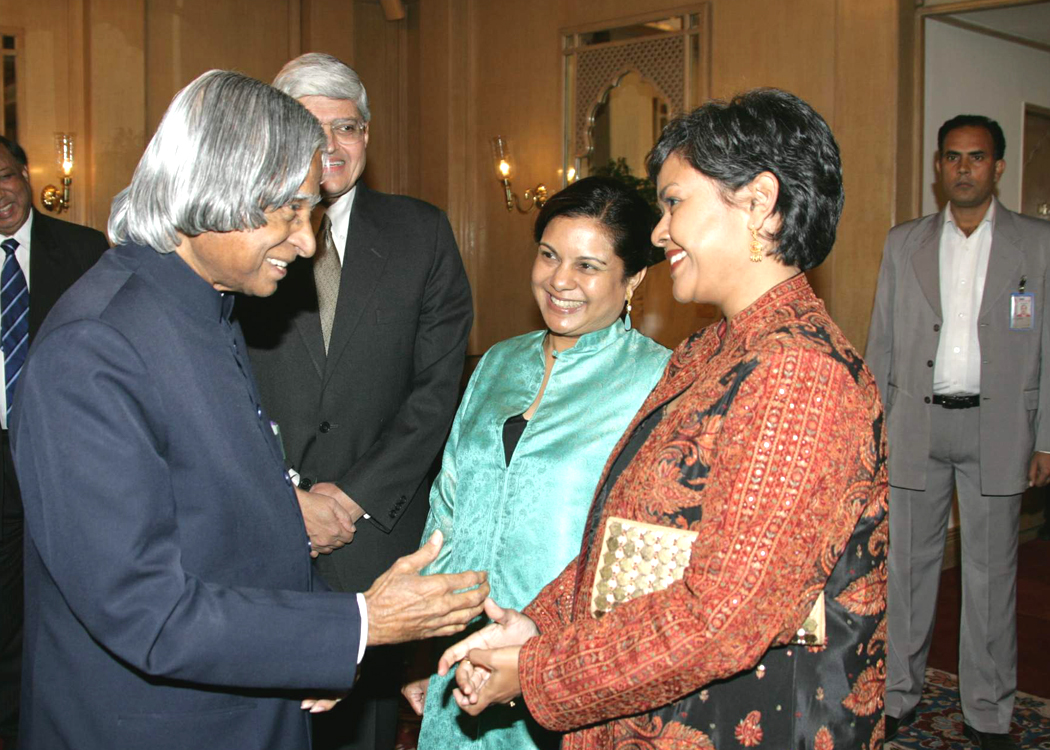

PURA Mission
PURA (Providing Urban Amenities in Rural Areas) envisages economic empowerment to a cluster of villages through the provision of physical connectivity, electronic connectivity and knowledge connectivity leading to economic connectivity. I would like to share with you the sequence of actions needed to realize a PURA cluster from the intention of an individual, NGO, industry, educational institution or financial institution to its completion.
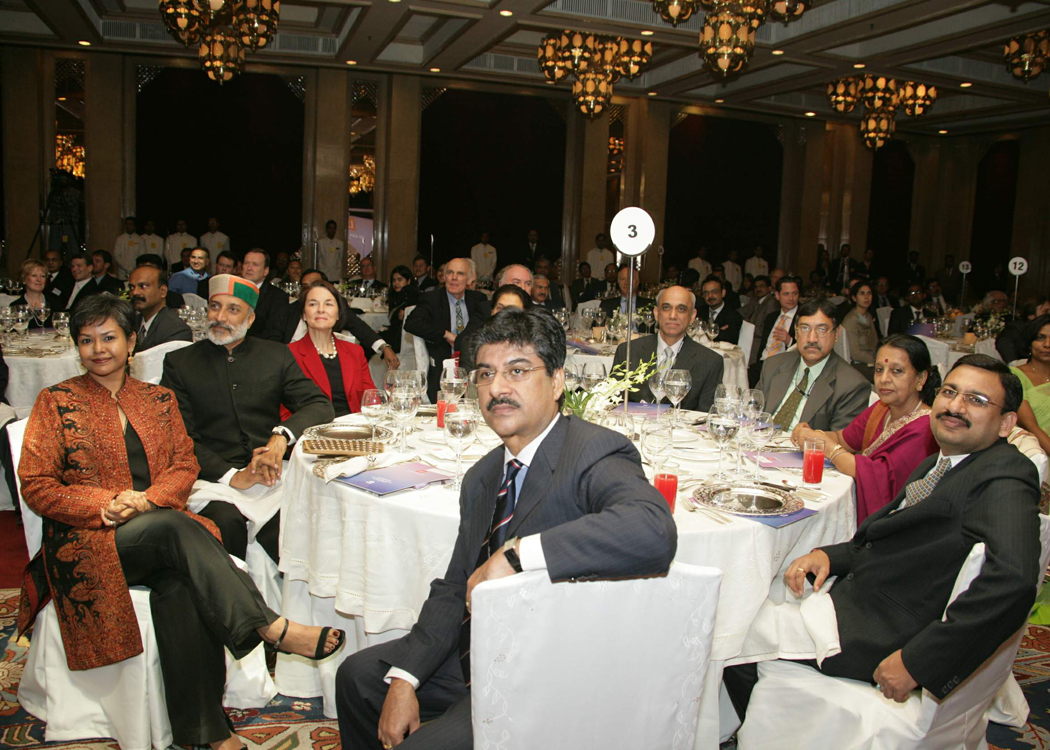

Profile of PURA Mission
Based on the terrain and climatic conditions there could be four types of PURA in our country. They are plain terrain PURA, hill PURA, coastal PURA and desert PURAs. The population in the Plain terrain and Coastal region PURA may be in the region of 20,000 to 100,000 in a cluster of 20 to 30 villages, whereas in the Hill or Desert PURA may have a population of 7,500 to 15,000 people in a cluster of 30 to 50 villages or hamlets.
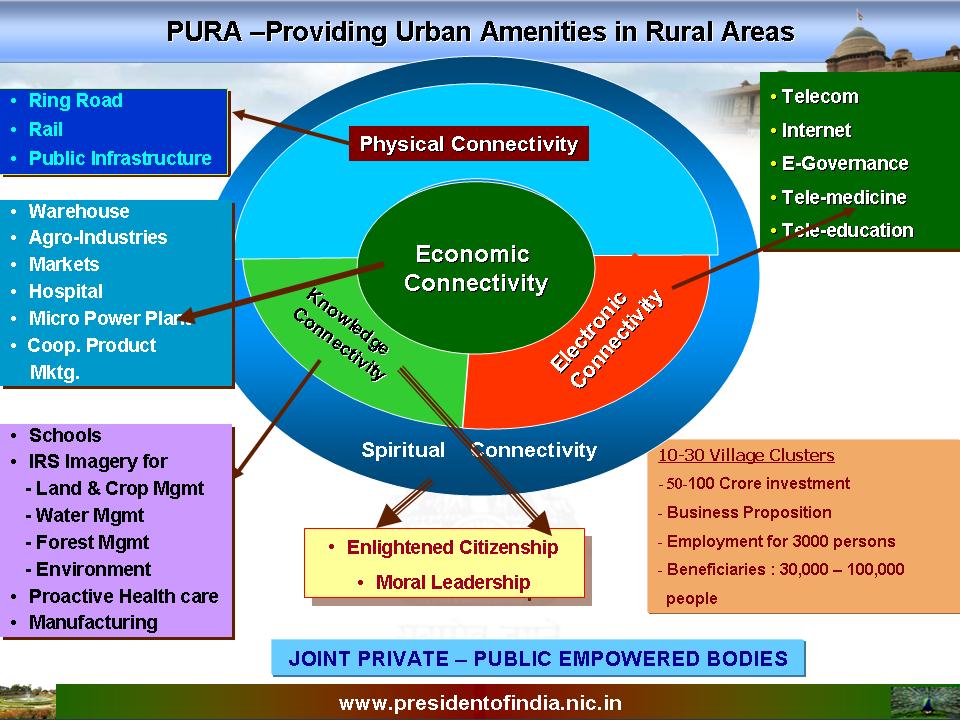

PURA Realization ? Flow Sequence
The flow sequence for realization of PURA is described.
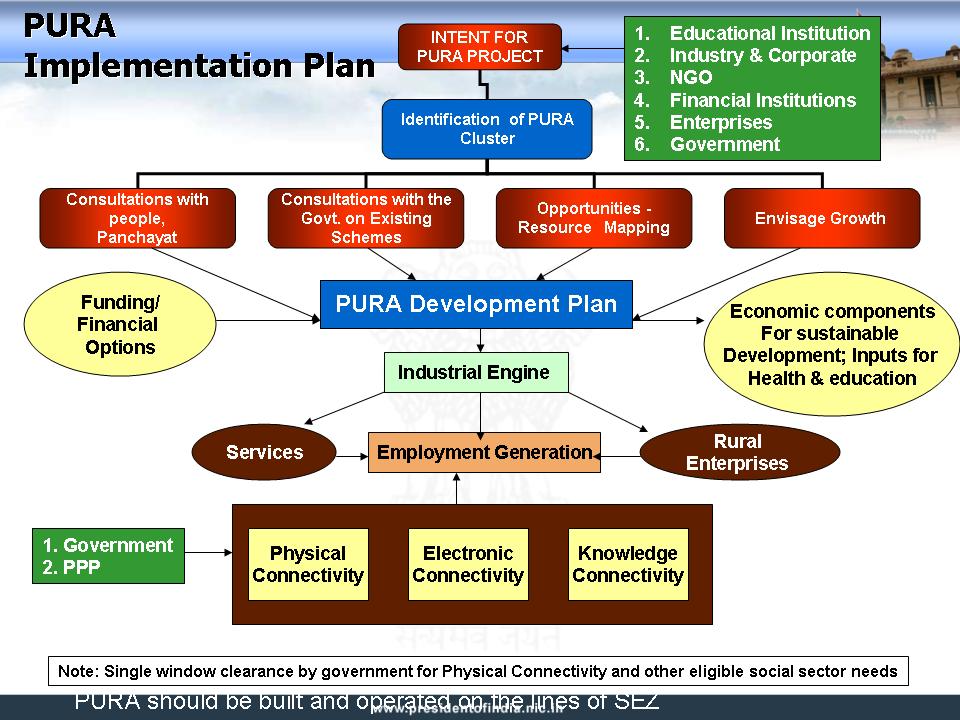
As soon as decision is made to create a PURA, there is a need to identify the PURA cluster with the villages which are to be included. Simultaneously, consultation must commence with Panchayat Members, government on existing scheme, opportunities resource mapping and the envisaged growth with the business community. This consultation will lead to PURA Development Plan with emphasis on employment generation through an industrial engine. Parallely, Government can consider development of physical, electronic and knowledge connectivity through a public-private partnership. Integrated action in all the areas is the key to the development of PURA as a business proposition.
The steps involved in creation and maintenance of PURA are:
1. An institution such as educational / industry /Societal Transformers / financial institutions / small scale enterprise / Government intends to create a PURA cluster.
2. Desiring agency identifies the groups of villages in the district which are suitable for creation of an economically empowered PURA cluster.
3. Consultation with the Panchayat board members, resource mapping, envisaged growth path and study of planned existing government schemes in the area are carried out in parallel.
4. The institution determines the industrial engine for the PURA development based on the core competence and natural resources of the region.
5. Simultaneously, the institution works out the funding requirement including the funds which have been catered for governments? development schemes envisaged in the area.
6. The industrial engine plans the services and the rural enterprises and determines the total employment generation potential of the PURA complex both during commissioning and subsequently during its operation.
7. The economic empowerment of the PURA is supported by the establishment of ideal physical connectivity, electronic connectivity and knowledge connectivity for the whole complex.
8. The district authorities discuss the whole PURA plan with the intending institution and arrive at an implementation plan which may include the following:
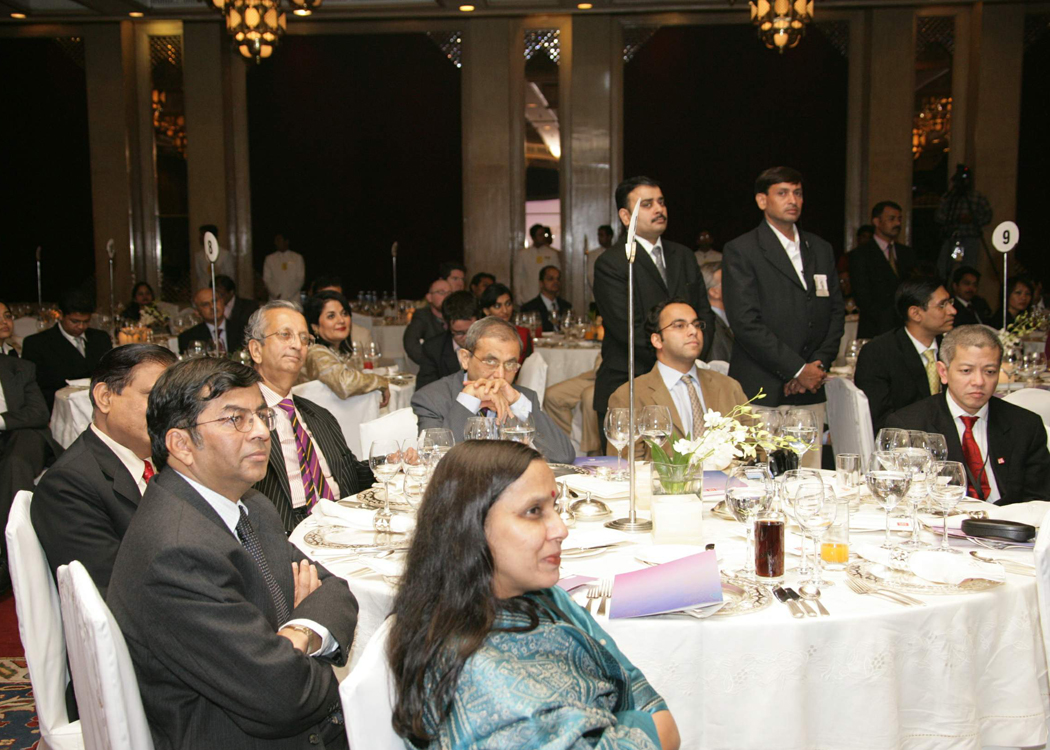
(a) Government will be responsible for provisioning of the land required for the complex in consultation with local bodies.
(b) The Government may make the funds allotted for the regional developmental schemes available to the implementing agency to enable implementation of the PURA programme as a turn key project with single point responsibility.
(c) The implementation agency will create all the connectivities envisaged for the cluster and establish financially viable enterprises leading to provision planned employment opportunities.
(d) The implementation agency will also take the responsibility for continuous provisioning of quality healthcare and education to all people living in the PURA complex. The Government will be required to provide the subsidy element to all the eligible categories of people.
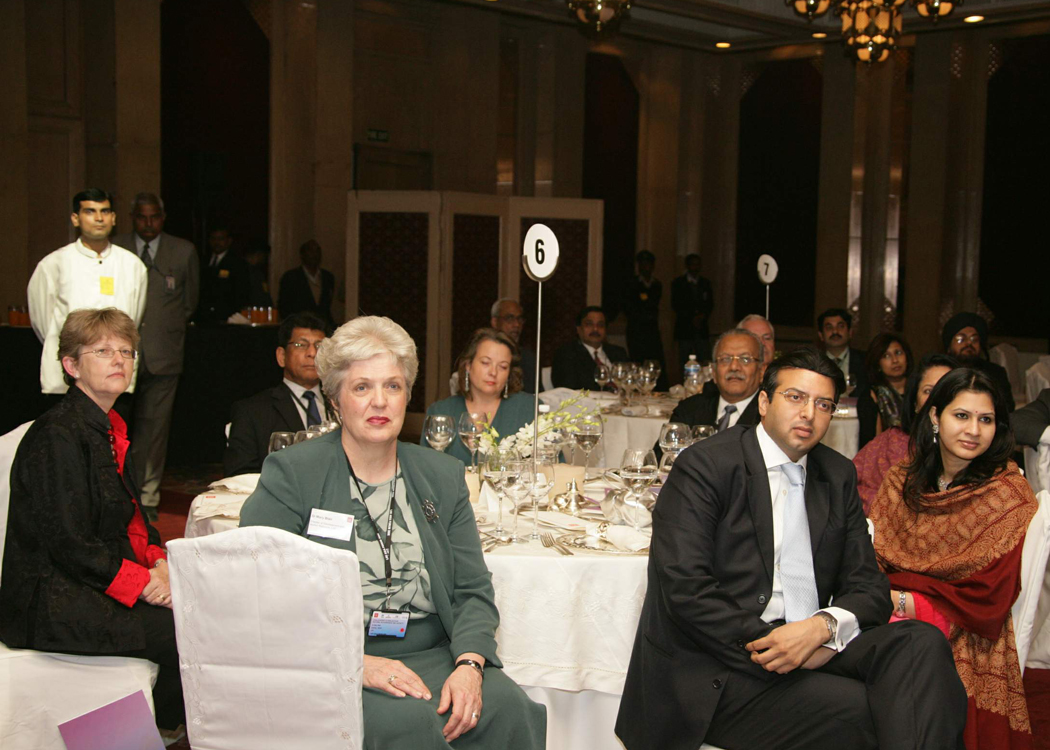

Assessment of initial conditions
1. Survey the land availability and land use pattern, housing conditions, roads, drinking water system, water bodies, energy systems, population characteristics including skills available, schools, vocational training centres, primary health centers and existing occupational opportunities in the proposed PURA Cluster.
2. Establish the development indicators for the PURA Cluster for various socio-economic parameters such as Poverty, Safe Water, Infant Mortality Rate, Pucca House, Literacy, Formal Education, Life Expectancy, per capita expenditure.
3. Examine the availability of higher educational institutions including engineering colleges in the proposed PURA Cluster, which can take lead role in implementation. Existing sanctions by the central and state governments for the common facilities in the village cluster such as roads and other infrastructure facilities.
4. Identify the native strengths such as availability of unique raw material, special skills and craftsmanship which have the potential to become a wealth generating enterprise with the infusion of technology and marketing opportunities.
5. Establish optimum grouping of the villages relating the potential strengths or core competence.
6. Create awareness and consensus among the people of the cluster of villages about the proposed PURA in the region with Panchayat participation.
7. Finalize a lead agency like educational institution to plan and implement the PURA
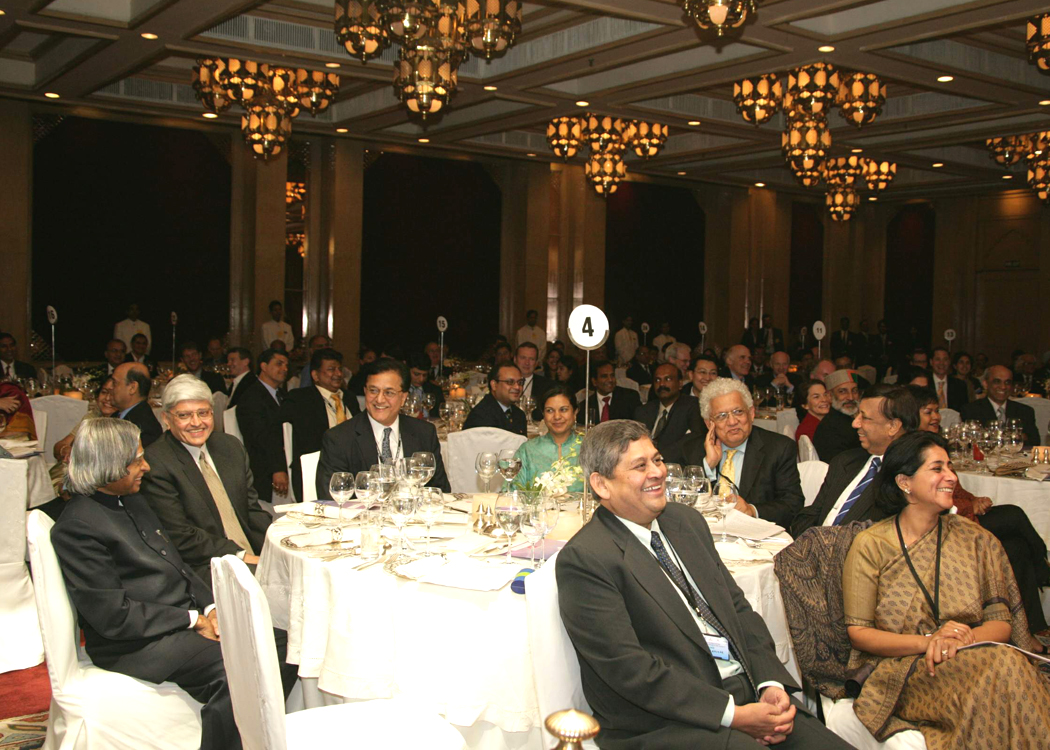

Content of the Master Plan for PURA
1. Master plan ? will include defining gross land use pattern, plan for physical connectivity, plan for electronic connectivity and the plan for knowledge connectivity and a plan for creation of enterprises including business plan.
2. Village level layout plan ? will include specification of residential areas, institutional areas (hospitals, schools, Police stations, offices, Village Knowledge Centers) Rural Industrial areas, Commercial areas, Parks, recreational areas etc., through Community Mobilization Procedures.
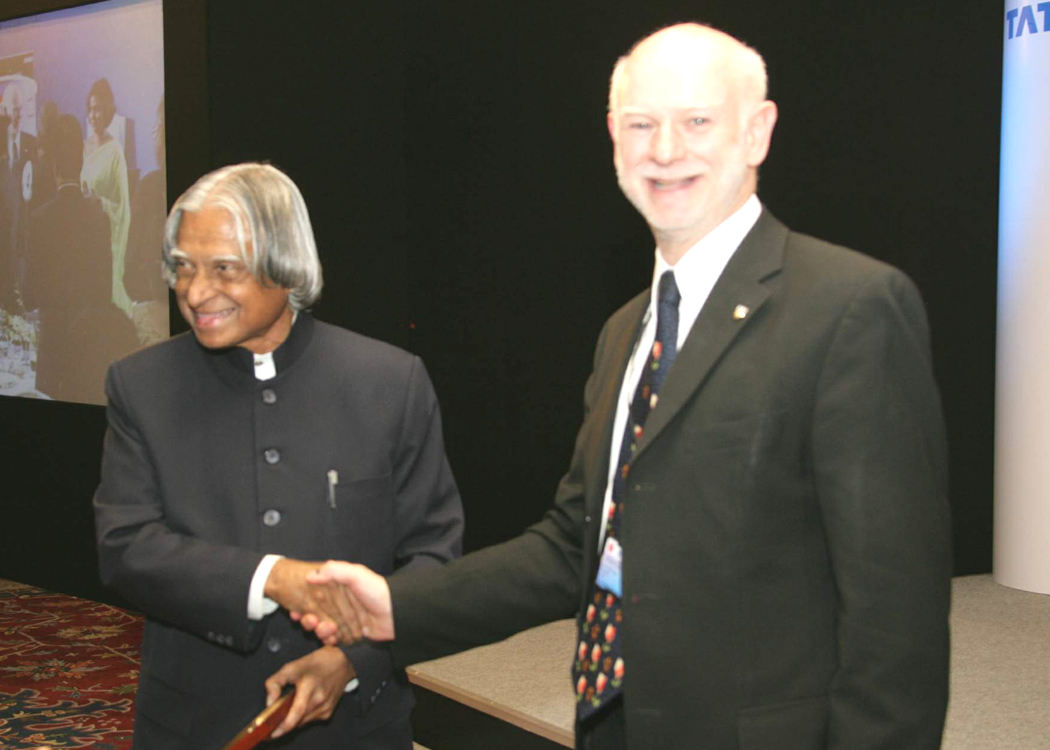

Thrust areas for PURA:
Thrust areas for PURA would be the following:
1. Creation of employment opportunities for all the employable people particularly the youth.
2. Capacity building in education ? school, value added employable skills and knowledge.
3. Provision of quality health and timely health care, safe drinking water, quality reliable electric power, energy and water efficient pucca houses.
4. Typical examples of PURA connectivities ? physical, electronic, knowledge and economic to be included in the PURA project report are given in Annexure I to IV.

Evolution of PURA Project Report
1. Based on PURA Development plan evolve the PURA Project report.
2. Identify the nodal village and its cluster villages.
3. Specify the development objectives based on the development indicators and means for achieving that objective as given in the Master Plan stated above.
4. Interact with possible funding agencies and specify the funding methodology.
5. Prepare a management structure for implementation of the PURA cluster specifying the linkages with agencies including NGOs, financial institutions, local bodies, district authorities and other government agencies.

PURA as a Business Model
It is a business proposition of Rs. 100 crores with public and private partnership over a project period of 5 years. Government (Bharat Nirman Programme, Rural Development Ministry, Prime Minister Sadak Yojana, Prime Minister Rojkar Yojana, Sampoorna Graha Yojana, Navodaya Schooling, 100 days Employment Guarantee Scheme and State Government Employment programmes); Banks- NABARD, ADB, WB, UNDP, UNICHEF, UNESCO; Venture capitalists can fund PURA components. However, initially Rural Development ministry is planning to create 2 PURA clusters in each of 600 districts in the country with seed funding. This may attract the public- private participation for providing value added services in the three sectors of the economy and run as sustainable business propositions. Already certain states like Chhattisgarh, Karnataka, and Kerala have taken up the PURA as a programme for implementation as Government initiatives and also certain private initiatives have established working PURAs in Tamilnadu, Maharastra, Madhya Pradesh and Andhra Pradesh.

Typical Working PURAs
It is possible to get an insight of PURA by studying few of the operational PURAs which are functioning in different parts of the country. They are: Periyar PURA, Loni PURA, Chitrakoot PURA and Byrraju PURA. Let me highlight some of the operational PURAs.
Periyar PURA (Tamilnadu):
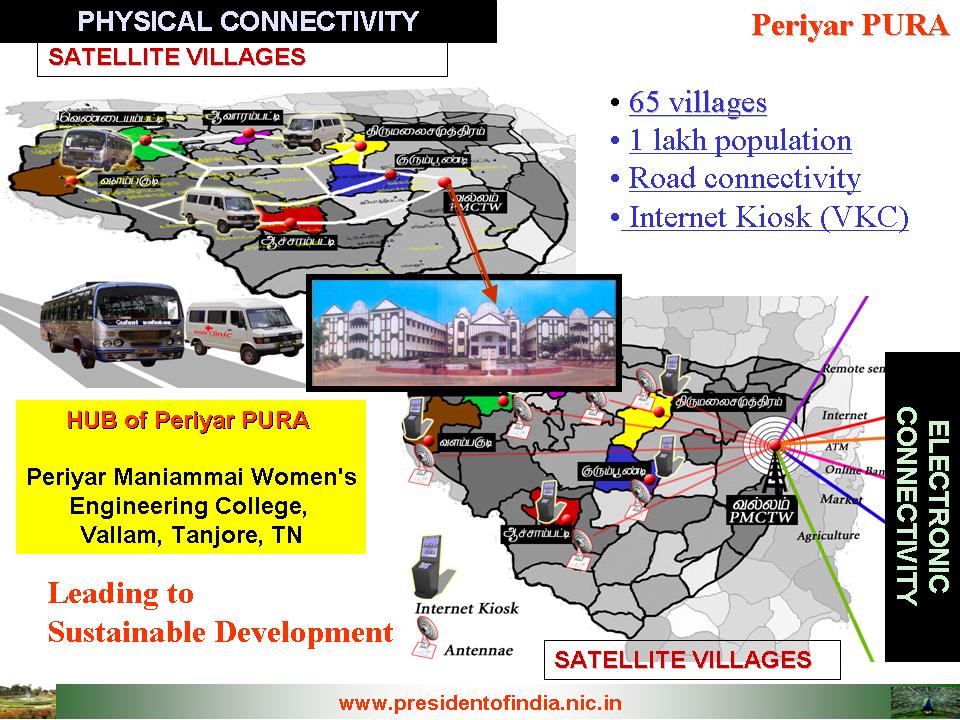
Periyar PURA complex pioneered by Periyar Maniammai College of Technology for Women, Vallam, Tanjore is functioning near Vallam having a cluster of over 65 villages in Tamilnadu which involves a population of 1 lakh. This PURA complex has all the three connectivities - physical, electronic and knowledge - leading to economic connectivity. The center of activity emanates from the women engineering college that provides the electronic and knowledge connectivity. Periyar PURA has health care centers, primary to post graduate level education and vocational training centers. This has resulted in large-scale employment generation and creation of number of entrepreneurs with the active support of 850 self-help groups. Two hundreds acres of waste land has been developed into a cultivable land with innovative water management schemes such as contour ponds and water sheds for storing and irrigating the fields. All the villagers are busy in cultivation, planting Jatropha, herbal and medicinal plants, power generation using bio-mass, food processing and above all running marketing centre. This model has emanated independent of any government initiative. The committed leadership has been provided by the engineering institution. Recently, 5 of Periyar PURA villages are connected through Wi-MAX Wireless and having minimum 4 mbps connectivity with the Periyar PURA nodal centre. It provides a sustainable economic development in that region.
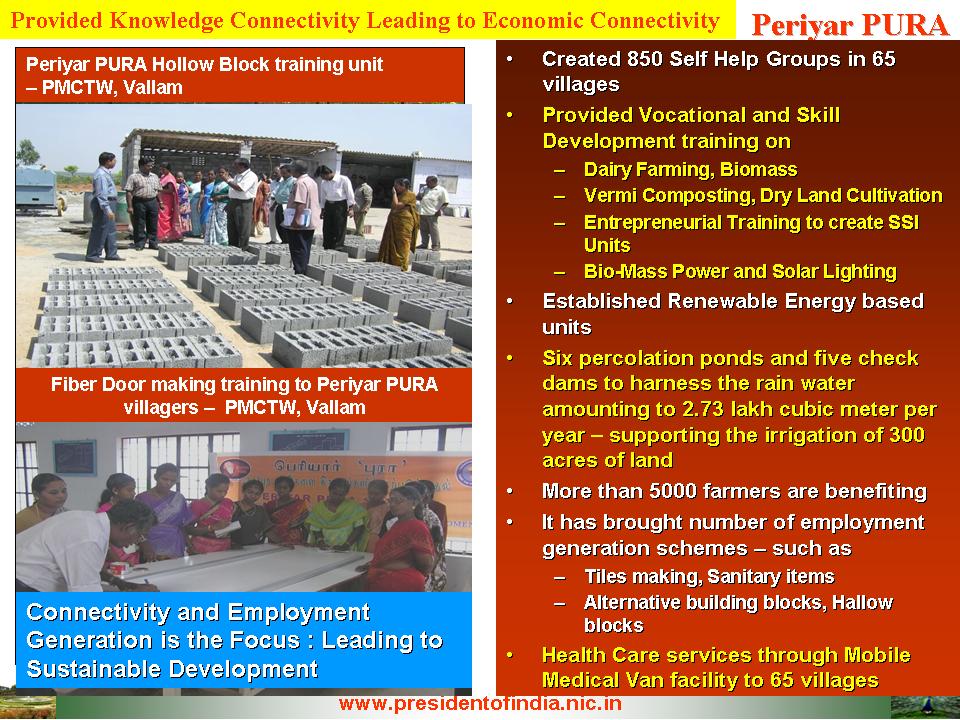
PURA: Loni Model (Maharashtra):
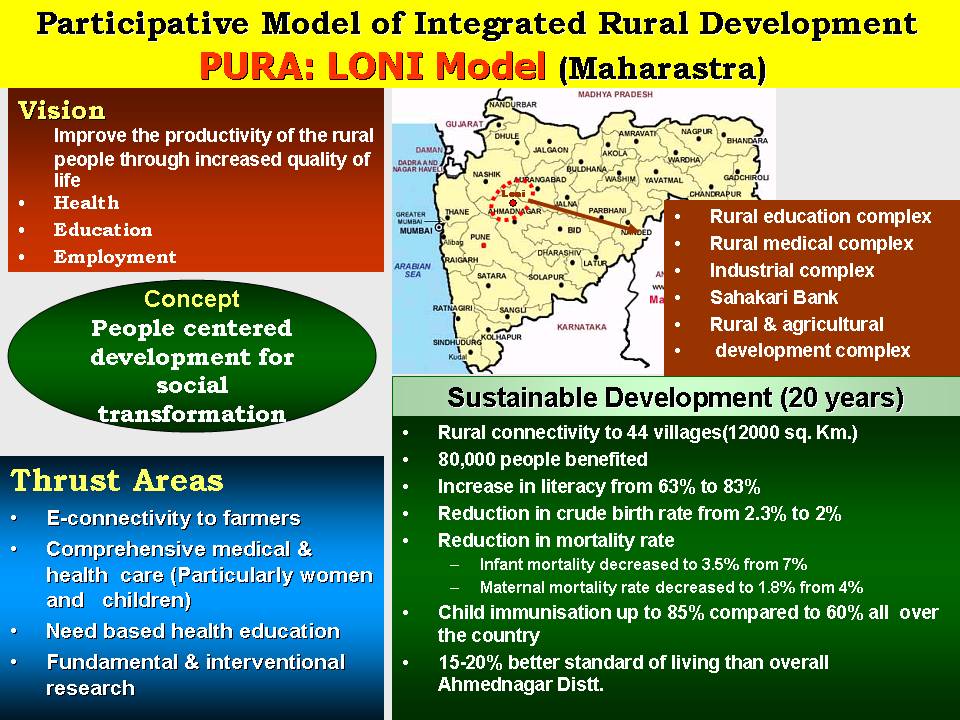
Loni PURA in Maharashtra where a participative model of integrated rural development has come up among 44 villages with the population of 80 thousand. The Loni PURA model has been pioneered by Pravara Medical trust. It is improving the productivity of the rural people through improved quality of life with healthcare, education and employment. The concept is people centric development for social transformation. The thrust area of development has been on comprehensive Medicare particularly for women and children, need based health education and e-connectivity to the farmers. The complex has created 27 educational and vocational institutions consisting of schools, colleges, polytechnic and ITI including medical and engineering colleges. They have created sugar factory, biogas plants, chemical plants and power projects. They have large number of self-help groups for providing low interest loan for the weaker sections in the society. Due to the co-operative effort of the people, literacy in these villages has gone up from 63% to 83%, birth rate has come down, infant mortality rate has decreased to 35 per 1000 from 70 per 1000 and the standard of living of the people has gone up by over 20% compared to other villages in the neighbouring areas.
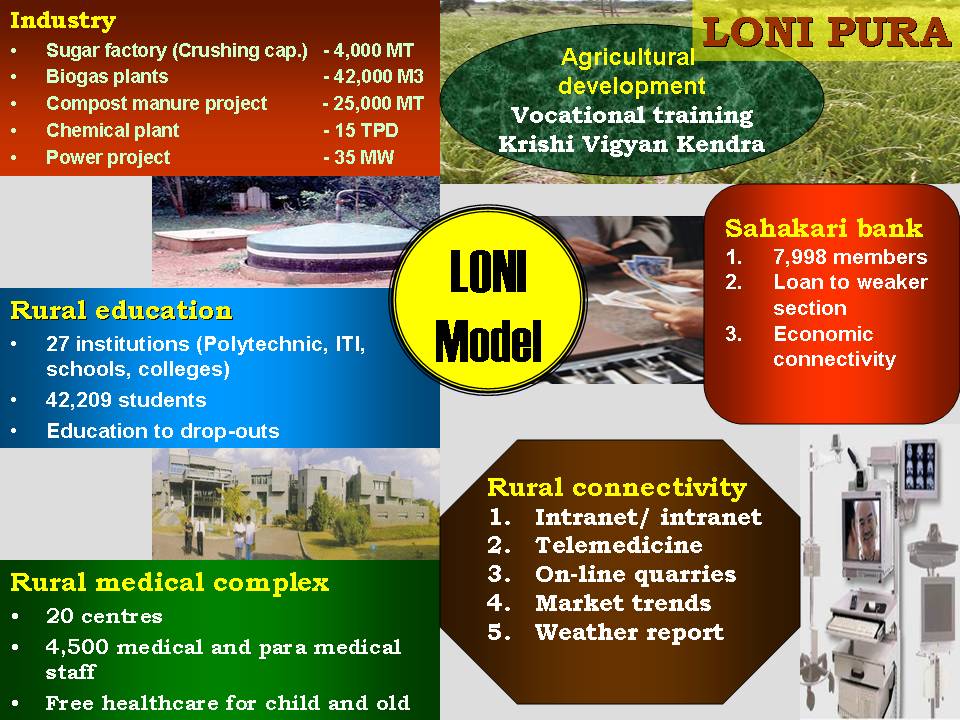

Byrraju PURA
Byrraju Foundation of Satyam near Bhimavaram has undertaken the mission of establishing 32 Ashwini centers benefiting 116 villages with the population of around 500,000 people. It has provided the electronic connectivity through wireless (512 kbps to 2 mbps), knowledge connectivity in cooperation with National Academy of Construction, Hyderabad and other domain experts, thereby creating economic connectivity in these villages.
Economic Connectivity: During the last 4 years of its operation, it has skill enabled and knowledge enabled in areas such as construction, tailoring, garment production, IT and spoken English skills. This programme resulted in 3000 jobs with the minimum earning of Rs. 3000 per month, this is 3 times that of their earlier earning potential. A rural BPO Gram IT, established in Jallikakinada center has trained the unemployed graduates in IT skills and spoken English and employed 100 people to do the BPO operations such as transaction processing of Human Resource data of Satyam Computers as a back office processing; data processing of one million self-help-group members of Andhra Pradesh such as financial data, accounting data, spending pattern, cultural aspects under the programme of ?Mapping the bottom of the Pyramid?. This Gram IT BPO has effected the 10% reverse migration from Hyderabad to Bhimavaram. This model can be replicated by many of our IT companies in the rural sector to create PURA clusters and bring rural transformation.
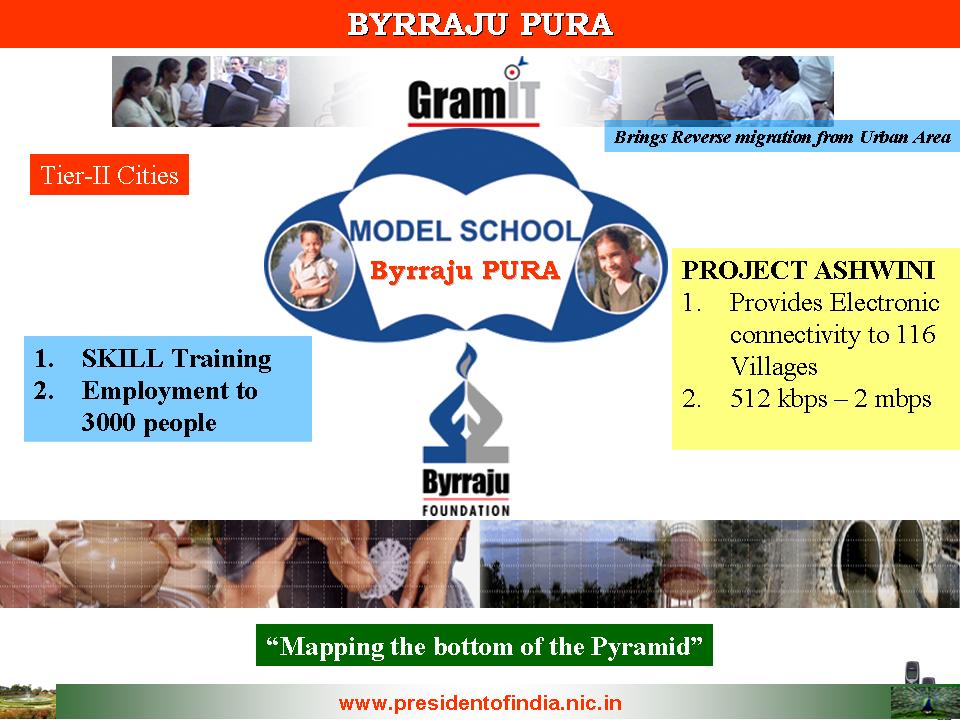

Technology Driven PURAs
In all the four operational PURA?s technology and application of scientific methods of working have played a very important role. For example, power through bio-gas and solar energy is used for house hold lighting and also for the farms; vermicomposting; check dams and water purification plants; Jatropha plantation to extraction and esterification; medicinal and aromatic plants cultivation, extraction and manufacturing healthcare products through self-help groups; low cost housing using alternative building blocks; Dairy farming; healthcare and education services; connectivity using wireless and Wi-MAX technologies and enabling the sustainable development and business processing taking places among the village clusters. In all these operational PURAs, employment generation was the focus using technology experiences from the colleges and educational institutions and through assessment of markets which can absorb the products and services. With the emergence of PURA Clusters in different parts of the country, what is now required is the establish the linkage to PURA clusters by setting up of Domain service providers through PURA Nodal Knowledge data centers.

Conclusion: PURA in 2012
This PURA complex would have transformed into a dynamic rural complex with focus on employment potential for all the families of PURA cluster with all the connectivities. This PURA complex will have its umbilical connectivity with the nearest university. Let us visualize how the PURA cluster will transform into, by the year 2012, based on the already operational PURA we have discussed:
a) Provide dwelling units to all the village citizens with clean water supply and sanitation facilities,
b) The village complex will have 100 percent literacy ,
c) Apart from upgrading existing schools, the complex will have a few colleges, world class vocational training institutions in construction, carpentry, welding, natural art; computer maintenance and services, IT Enabled Services, BPO and a Call Center. The "Sakshat" programme - a one stop education portal will be used through internet for capacity building in this region,
d) People in the PURA complex will be able to get quality healthcare through tele-medicine and also through mobile clinics via Primary Health Centres. They will be brought under a corporate medical healthcare scheme,
e) Each PURA village complex will be free from diseases like polio, TB, leprosy and malaria and other waterborne diseases. The infant mortality rate will be less than 10,
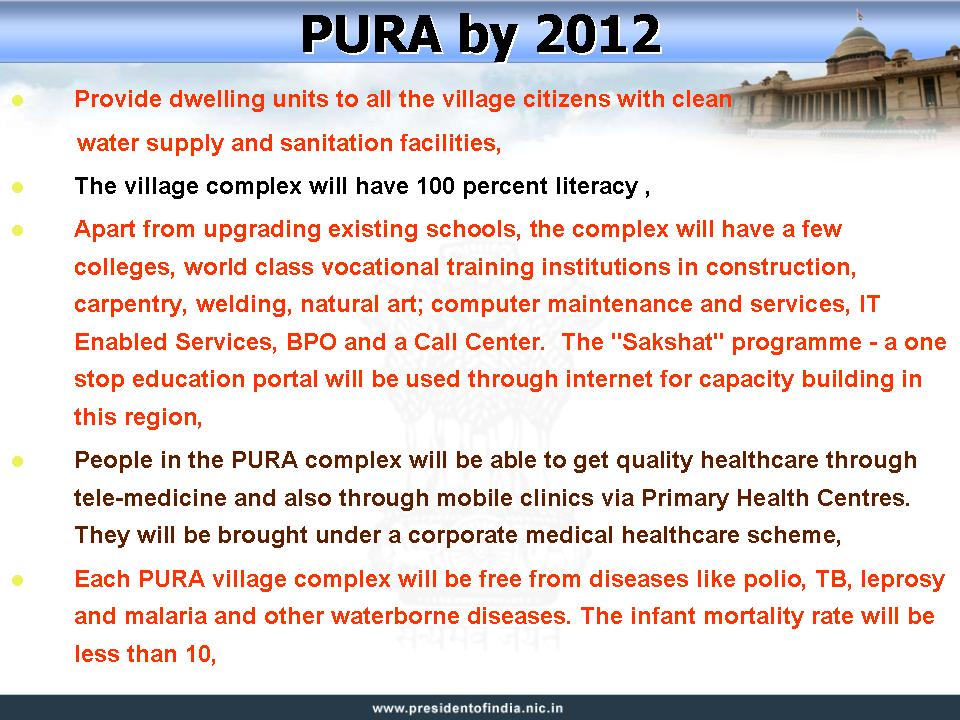
f) The PURA complex will promote horticulture and floriculture products, apart from agriculture in collaboration with nearby agricultural universities and research institutions,
g) There will be agro-processing industries in each PURA complex for value addition to horticulture produce,
h) Creation of dairy and fish farms in each PURA complex for providing additional non-farm revenue to farmers. They can also produce other dairy products,
i) Revival of all existing water bodies in the PURA cluster,
j) Provision of employment to all employable people of the village through additional jobs in dairy, agro-processing, construction, handicraft and tourism enterprises,
k) Overall, per capita income of the PURA cluster should increase by three times and people living below the poverty line should come down to zero in six years.
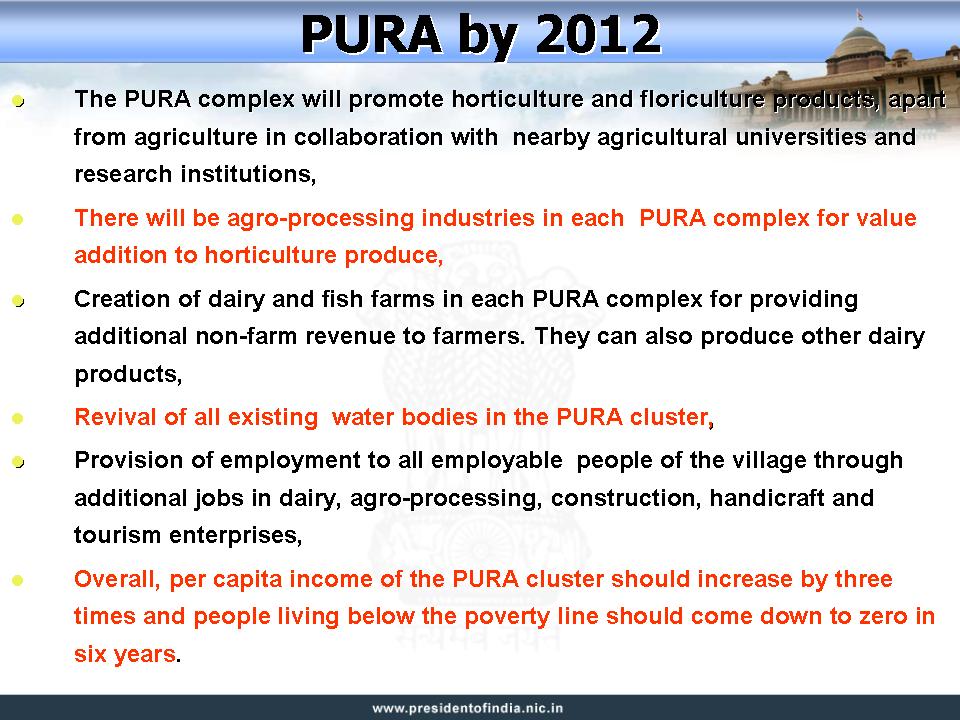
Of course to achieve the above performance, a dynamic, empowered PURA management board structure is very vital. This has to be evolved with the active participation of State Governments, district authorities, societal transformers, educational institutions, small scale industries or an enterprise in association with the Panchayat. Finally, it will be managed as a viable and sustainable business proposition through the local entrepreneurship.
I would request the participants of London School of Economics Asia Forum to study this model and offer suggestions which will enable us to further refine the implementation process. PURA model may also be useful to other developing countries who have large population living in rural areas.
My best wishes to all the members of LSE Asia Forum.
May God bless you.
<<Back
|
|